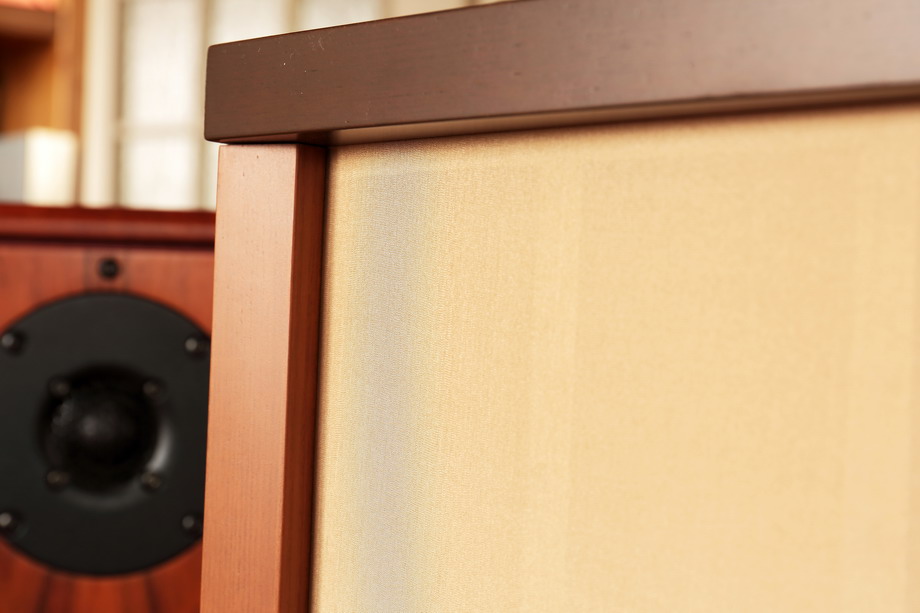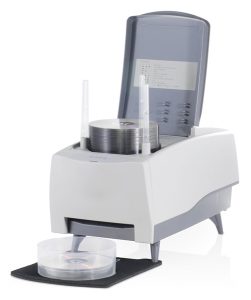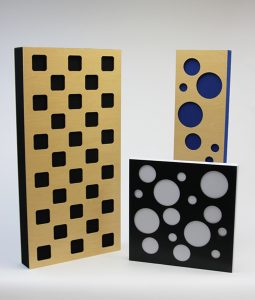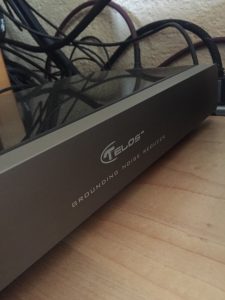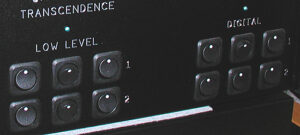Acoustic revive is a Japanese company founded in 1997 and run by Mr. Ken Ishiguro-san. It specializes in audio cables and anti-vibration accessories, but it also offers innovative products, the ideas of which are most often inspired by the University of Tokyo. We are testing one of the products used to correct room acoustics, the RWL-III Absolute panels.
As the saying well-known is science-fiction goes, an incomprehensible science is perceived as magic. In the audio world, what we do not understand is understood by some audiophiles/engineers in this way, but instead of a relatively neutral and even friendly 'magic' they use the term 'voo doo.' They don't know what they're saying... The conflict between what is known and what is incomprehensible is captured by the monologue of the main character of the novel Monday begins on Saturday by the Strugatsky brothers, just re-issued by Prószyński i S-ka (with a new translation):
These cowardly people, I thought to myself, resemble some scientist-experimenters—stubborn and hardworking, but completely unimaginative and therefore very cautious. Obtaining a suddenly remarkable effect, they retreat in panic, hastily explain it with an error of the experiment and, in fact, reject the new, because they are used to the old, conveniently fitting in the ruts of the authoritative theory... .
Arkadij/Borys Strugatsky, Monday starts on Saturday, translated by Ewa Skórska in: Piknik na skraju drogi i inne utwory, Warsaw 2011.
Fortunately, Mr. Ken Ishiguro, who is responsible for new ideas intended to improve the quality of the sound, that are later converted into Acoustic Revive products that allow to achieve that goal, is neither a coward nor is he deprived of imagination. Looking at the company's range, one could even say that he is an extremely brave man, standing against ignorance and a lack of willingness to experiment.
Examples? Here you go: his company has been offering devices acting as an artificial ground—today offered by many leading manufacturers—a noise generator, minimizing interference inside the devices, the versions of which are offered today also by such top companies as Nordost or Synergistic Research, and even cable stands, the lack of which in their range is difficult for a modern cable company to explain.
However, we can still find products in the Acoustic Revive catalog that are waiting to be "discovered" by the world, although their operation has a strong theoretical basis and has been tested at the University of Tokyo, let it be piezoelectric device feet pads or products in which air ionization plays an important role. One of them are acoustic panels, now available in the 'Absolute' version.
RWL-III Absolute
RWL-III Absolute IS A BIG SIZE acoustic panel measuring 665 x 90 x 1160 mm (W x D x H, without feet), weighing 6.2 kg. This means that we are talking about an area larger than classic panels, but with a shallow depth and low weight. A classic damping panel, or even one just diffusing sound waves, would be much heavier and deeper.
Mr. Ishiguro, however, has his own idea of how this type of acoustic panel should work. The manufacturer's website, its English version, says:
[RWL-3] Diffuses reflection and sounds from speaker ideally by its special material ditch which has different depth. The RWL-3 has been designed by computer analysis and listening test. Also carefully calculated curve of the from surface will diffuse sound in wide space compared from other diffusing type room tuning panels. The high-tech natural silk material and special foam material which contains Tourmaline releases negative ion which will make the sound very smooth and materializes excellent sound quality.
Acoustic Revive.com; accessed: 27.04.2021.
It concerns the previous model, RWL-3, but the same assumptions apply to its new Absolute version (the manufacturer uses the lower-case letter: 'absolute'). Already from this short excerpt it can be concluded that the constructor wanted the best possible distribution of the sound wave, and not its damping (fading). You can also see that he used materials such as silk and tourmaline, which are not used by other manufacturers. But that's not the only difference.
APPEARANCE
From the outside, the new panels look almost identical to the previous ones and are very, very Japanese in proportion, workmanship quality and appearance. Their frame is made of two different types of wood—a different type is used for the bottom and top, and another for the sides. The front, clad in natural silk with a light brown color is arched, and underneath it you can see the "ribbing" that keeps the material at the right distance and divides the interior of the panel into narrow sections. The back is closed with a classic fibreboard, and the panel stands on screwed-in wooden legs. Let me repeat—the RWL-III Absolute looks very classic.
TECHNOLOGY
Mr. Ishiguro has clear views on how such a panel should work. After making over a hundred prototypes, based on computer analyzes, he sat down for auditions and after many more attempts he determined the appropriate proportions of the individual materials. He meant not to "kill the sound," which is caused by excessive attenuation.
The problem, he says, is that rooms with classic computer-modeled sound-diffusing panels sound unnatural and have distorted perspective and an unnatural sound stage. This is because, he says, the reflections of the sound inside these panels distort and are radiated into the room. The diffusion materials used to "tune" the room, in which each frequency band is analyzed by the computer, do not take into account, as Mr. Ishiguro adds, elements such as room size, shape, and the type and size of the loudspeakers.
The highest quality natural silk was used as the surface material in the RWL-III Absolute. Silk is the only fiber that has a random weave and does not have a peak (resonance) in the frequency curve. In classic panels, the sound is extinguished because, according to the owner of Acoustic Revive, they use fibers obtained through chemical reactions. Fibers of this type have a uniform yarn pattern that has a characteristic resonance and this "peak"—we read—adds to the useful sound, causing unpleasant and irritating reflections.
Moreover, the silk material in the AR panels contains tourmaline, which releases negative ions. It is a crystalline boron-silicate material, belonging to the group of silicates, made of such elements as aluminum, iron, magnesium, sodium, lithium and potassium and classified as semi-precious stones. In addition to the sheerl, it belongs to the rare or very rare minerals. The name comes from the Sinhala turmali meaning the ability to attract fire ash when heated. It is used in alternative medicine in the form of jewelry.
The Tourmaline is an integral part of the silk used in Acoustic Revive panels because it is added in a powdered form to the leaves that are eaten by silkworms. The heterogeneity of the panel surface is supported by separate sections of random depth, made of special foam, which also contains tourmaline. Let us add that negative ions are used by Mr. Ishiguro to condition CDs, which we checked during several KTS meetings and it really works (more HERE).
DIFFERENCES
The basic components of the RWL-III Absolute are the same as in their older version of the RWL-3. There is a difference between them though, which is a result of several years of listening sessions and research carried out by Mr. Ishiguro-san. Seemingly nothing, not much, and yet... .
The point is that the foam inside the panels has been covered with a paint called Kiyoh-stone. As Mr Elia Hontai-san from the Muson company, which is a representative of Acoustic Revive outside Japan, wrote to me, Kiyoh-stone is a rare earth element, the main component of which is aluminum silicate. It is available at only one location in the Land of the Rising Sun, in Gunma Prefecture. This is no coincidence, because Acoustic Revive is located in the same prefecture.
The property of this material, which Mr. Ishiguro-san wanted, is that it easily generates high intensity negative ions, the maximum of which is in the far-infrared rays. Kiyoh-stone generates up to 40 times more ions than tourmaline. To cover the foam, a paint is used in which both Kiyoh-stone and Tourmaline have been added in appropriate proportions, selected experimentally during the listening sessions.
The owner of the Acoustic Revive, says Elia, is very pleased with the results he achieved, despite the high price of this unique material and the costs that it involved to find a proper use for it in his brand's products.
SOUND
Recommended placement and what came out of it
A proposed placement of panels is included in the user's manual
The User's Manual, which we receive with the panels, tells us about the six basic possibilities of using the RWL-III Absolute panels.
VARIANT № 1
The simplest version is with a single panel placed on the wall between the speakers, behind the audio system. Americans place devices on the side, which is why this wall is usually accessible. For me there is no such possibility, probably like in 90% of other systems in Europe, so I tried this version by putting the panel in front of the rack. However, I achieved a much better effect by putting it behind me.
VARIANT № 2/3
The second and third variants assume placing two panels directly behind the speakers. In my listening system, behind the speakers there are high shelves with books and CDs, often in two layers, which creates a good damping effect. Moreover, the Harbeth M40.1 loudspeakers are placed quite close to the rear wall and I found it impractical to insert panels there. However, I assume that in most systems this solution will be the one actually used.
Variant number three is a variation of the previous one, but with the panels placed not directly behind the speakers, but diagonally behind their rear corners. I tried this variant and it's pretty good. However, if possible, it is better to arrange the panels according to version No. 2.
VARIANT № 4/5
For this setup, we will need three panels. Two will be placed behind speakers, parallel to the rear wall, and the third in the middle, also against the rear wall. Its variation is variant no. 5, in which the panels are positioned at an angle. During the test, I tried its modification, in which the side panels were behind the speakers set at an angle, and the third panel was placed behind me, against the wall.
VARIANT № 6
The most extensive variant, in which seven panels are used, with three at the back—behind the speakers and in the middle —two on the sides, placed approximately in 1/3 of the distance between the line connecting the speakers and the listening position, one panel behind listening point and an additional panel bolted to the ceiling. The set includes metal hooks that can be used for this.
VARIANT HIGH FIDELITY
I had three panels at my disposal during the test. Due to the space limitations, after a few days of intensive A / B / A comparisons (each such change required the removal of all panels to the bathroom so that they would not affect the acoustics of the room, and I made several dozen of them), I came to the conclusion that with a strongly damped wall behind the speakers, modestly damped wall behind listening position (four Vicoustics panels), the variant with two panels on the sides controlling the first reflections from the loudspeakers and a third panel behind me was the best solution.
Let us add that the listening room I use is quite soundproofed, and its measurements and acoustic description can be found in the following articles: Z wizytą w: HF. Czyli: pomieszczenie odsłuchowe High Fidelity w oczach Mariusza Zielmachowicza (HF № 189, 1 January 2020, see HERE) and Miroslaw Andrejuk | Acoustic Lab. Czyli: kilka słów o akustyce wnętrz (HF № 185, 16 September 2019, see HERE).
Recordings used for the test | a selection
- Andrezej Kurylewicz Quintet, Go Right, Polskie Nagrania "Muza"/Warner Music Poland 4648809, "Polish Jazz | vol. 0", Master CD-R (1963/2016); review HERE
- Frank Sinatra, Sinatra's Sinatra: A Collection Of Frank's Favourites, Reprise Records/Stereo Sound SSVS-017, "Stereo Sound Reference Record" | "Signature Sinatra", SACD/CD (1963/2021)
- Johnny Cash, My Mother's Hymn Book, American Recordings B0002362-02 | Compact Disc (2004); more HERE
- Takehiro Honda Trio, This Is Honda, Trio Records PA-7005/Ultra-Vybe | Solid Records UVWA-0043 | CDSOL-1484, CD (1972/2020)
- Vangelis, Blade Runner, Atlantic Records/Audio Fidelity AFZ 154, "Limited Edition | No. 2398", SACD/CD (1998/2013)
- Aquavoice, Silence, Zoharum ZOHAR 168-2, Master CD-R (2018); review HERE
Every material object that appears in the listening space changes the sound. The vast majority of them are neutral in this respect, i.e. the corrections they introduce have advantages and disadvantages. There are also some that worsen the sound and only a small group improves it. And from the latter, a small part does it in such a spectacular and unequivocally positive way as the RWL-III Absolute.
The Japanese acoustic panels modify the sound in a subtle way on the one hand, and on the other—in a fundamental one. They don't absorb/damped the sound, that's for sure. Admittedly, part of the upper midrange is withdrawn, but after a longer listening session it can be said that it is not about damping this part of the range, but calming it down, balancing the nervous "strokes" that appear from time to time, even in a low-tuned system like mine, without the panels
The changes I am talking about consist in making the sound stage deeper while slightly moving away the sound sources. Nevertheless, they seem more stable, larger and fuller. Previously, they did not lack anything, I did not complain. After a moving the panels around a few times, I was sure, however, that the RWL-3 Absolute allow the sounds previously masked out to reverberate more strongly, and thus enrich the whole presentation.
The impression is as if we changed the sound source to a more resolving one, or as if the preamplifier suddenly got rid of the smoothing of details—which is a typical way this type of product affects the sound. It was shown excellently by the Takehiro Honda Trio's This Is Honda. Recorded in real space, in one approach (for a piece) it has unprecedented naturalness, a derivative of both sonority and resolution.
Acoustic Revive panels immediately emphasized this feature. Without them, everything was OK, cool, good, but the moment with the panels in place and the stage deepened, the timbre slightly lowered, but most of all the instruments' bodies became denser and were better defined. It was as if the presentation had missed something without them, which I didn't realize until I heard it. There was, I guess, a bit of sophistication missing.
The second song on Frank Sinatra's Sinatra's Sinatra: A Collection Of Frank's Favorites, the In The Wee Small Hour, written by Bob Hilliard and David Mann in 1955, begins in the left channel with a harp. The harp is a very quiet instrument, which is why we can hear it so well thanks to proper microphones, that is we owe it to technical progress. And yet, even if it is underlined during the recording, we know that it has just such a fleeting character.
However, the Acoustic Revive panels made it for a while the most important instrument, even though the string ensemble was playing behind it. Without the panels, it is also present, but I perceived its presence as simply raising the channel gain with its mic, and with the panels it was heard as if the strings were playing softer. On the surface it seems the same as the relative volume balance is the same, but these are actually two different way of showing it. The Japanese panels smoothed the sound, but also showed the instruments—including the harp—in a more resolving way, which made it possible to better understand the producer's choices, it was simply easier to hear it all.
What I am talking about was shockingly clear with the music composed by Vangelis for the Blade Runner movie. Harrison Ford's voice, Deckard, was small and flat without them. I mean, it was neither small nor flat, because I can always hear it in my system fantastically, but it was so compared to the way it was presented with panels. The RWL-III Absolute excellently stretches the stage deeper, far beyond the back wall, but most of all, they differentiate the timbre and individual sounds in front of us. Everything gains mass, density and depth with them.
Although Japanese panels are not acoustic elements that could interfere with low frequencies, we may think or perceive it so. And this, as I assume, is due to much better reproduced bass higher harmonics. Already with the Sinatra's The Second Time Around I heard low bass and a kick drum, the elements that in this type of recordings is usually vague. This remaster is unique in this respect, because it shows the bottom end in an extremely natural way. Acoustic Revive panels made these two elements clearer and better disciplined.
It was similar with the Vangelis album, where the large percussion cauldron that came in after the first minute sounded much more real and dense with them, and the whole thing was better controlled and less nervous. Which was beautifully confirmed by the track opening the Aquavoice's album Silence. The very low bass that started it was better focused and less soft with the RWL-III Absolute, and at the same time it seemed—and I would swear it was—it went lower!
PLACEMENT OPTIONS
With three panels at our disposal, we can arrange them in several ways, of which the variant with two panels on the sides and one behind me worked best in my room. The sound was the most focused then and the space the largest. You can, however, arrange them otherwise. Leaving one panel behind me and the two front panels behind the speakers and positioning them at an angle, I got a slightly brighter and faster sound, while maintaining good resolution.
It is also worth trying the variant with the panel behind the audio system—it was not possible for me, but placing it in front of it, in front of me, allowed the stage to go back a step and deepen by another meter. The bass was not as spectacular as in the first setting, but you gain some you loose some. Finally, we can just start with one panel positioned (or hung on the wall) behind us. It gives a foretaste of what we get with the three of them.
Summary
When I brought the Acoustic Revive panels to the room where I am listening to music and placed them in the corner, the acoustics of the room changed. And it shouldn't, at least not to that extent. It is a well-damped interior, in which the acoustic elements damping the sound wave in such a small range should not manifest themselves so clearly. But they did.
The effect of the RWL-III Absolute on sound can be compared to replacing any audio component with a better one, without changing the basic characteristics of the sound, but by improving them. The panels do not modify the colors, but they bring them out, they do not add top or bottom, but better focus the edges of the sound spectrum. The sound is much more engaging with them and also more relaxing. Virtually everything is improved—from space, through color, to dynamics. One panel already shows us the right direction, two even more, and three did what I wrote about. I wonder what would happen with seven of them...
Acoustic Revive RWL-III Absolute Acoustic panel
Price (when reviewed): 1640 EUR/piece (+ VAT)
Contact: YOSHI HONTAI | MuSon Project, Inc.
MADE IN JAPAN
Provided for test by: MUSON PROJECT
Text: WOJCIECH PACUŁA
Images: Wojciech Pacuła
Translation: MAREK DYBA






